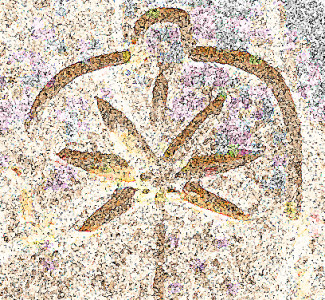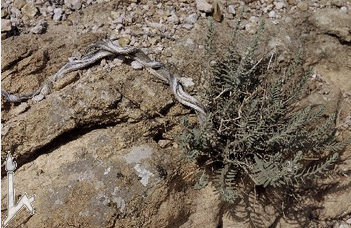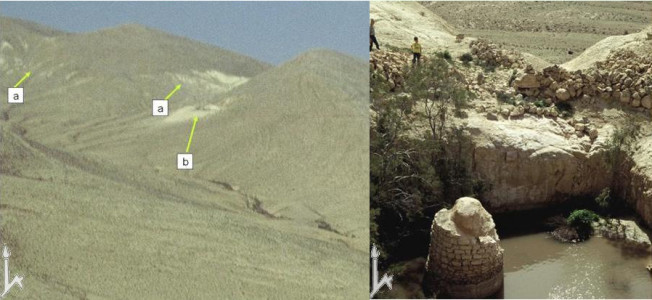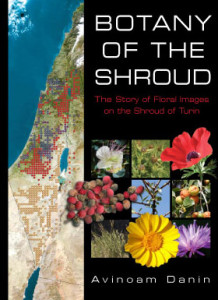
“We botanists consider the new plants we describe as new-born children and love them all. I have now 42 such plants and it is hard to say whom I love more.” (1)
— Avinoam Danin

If you’ve read The Gospel According to Yeshua’s Cat, you may have wondered where I found the inspiration for Yeshua’s parable of the caper flower, or the sycamore fig tree. The answer? Eminent botanist Dr. Avinoam Danin, most recently in the public eye with his book, Botany of the Shroud: The Story of Floral Images on the Shroud of Turin.
For much of the time when I was writing Yeshua’s Cat, I was living in isolated rural environments, with no access to academic libraries. When it came to biblical history and texts, this wasn’t a problem. My own knowledge and personal library were adequate. But I found that I wanted more details: what wild plants were native to Galilee? Judea? the Decapolis? Which of them might have provided food for hungry travelers? What trees were native to the different regions? How big were they, and what did they look like? In what seasons did they bear fruit? Have plant species mentioned in the Bible been identified? Might any have inspired parables that never reached us through the gospels? You get the idea.
So, like many writers before me, I turned to the internet, beginning my project with search terms like “indigenous plants of Israel.” It didn’t take long before I identified a site on the Hebrew University server as a gold mine: Flora of Israel Online, moderated by Professor Emeritus Avinoam Danin. Not being a botanist, I found navigating around the site to be quite a challenge at first: if I didn’t come armed with a specific plant’s Latin name, I got nowhere. But once I located a Latin list of Israel’s plants on a less tantalizing website, I was on my way. Each plant on Professor Danin’s site was documented with a wealth of photographs and data.

But that was only the beginning. One day I stumbled onto a different section of the site, sometimes called “Plant Stories,” sometimes “The Vegetation of Israel and Neighboring Countries.” Here Dr. Danin allows himself to speak more informally, using personal and cultural anecdotes to enrich his discussion of a huge variety of plants and habitats. From what I could tell, there are few wild places in Israel or its surrounding neighbors that he hasn’t explored.
And hidden among the plant stories was “The Story of the Caper”:
I liked the “tales of the caper” in the Mishnah. Raban Gamliel stated that “There will be trees that will provide fruits daily.” His pupil said “But it is written that there is nothing new under the sun”; Raban Gamliel said “Come and I’ll show you that they already exist in our world – they went out and he showed him a caper. . . (2)
Well, I was hooked, but it only got better–he went on to describe the caper blossom’s transformation through the dusk and night-time, which I used as the basis for Yeshua’s parable told to the young philosopher of the Decapolis (YC, p. 163).

Interspersed throughout the article I found more reminiscences of his own experience with the caper plant, including his personal practice of pickling and canning hand-picked capers as gifts.

Most of his plant stories never found their way into Yeshua’s Cat, although Yeshua’s makeshift meals of kanari berries and locust pods (YC, p. 83) I credit to him, as well as Yeshua’s examples of common knowledge: “If you feast on bitter almonds, will you not die? Where date palms grow, will you not find water?” (YC, p, 172). It still grieves me that I wasn’t able to use his explanation of how to recognize ancient cisterns in order to find water in the desert. Perhaps in the next book.

I suppose this whole blog entry is simply my way of saying thank you to Dr. Danin for being the kind of scholar who is driven by love of his discipline to share what he knows in appealing and accessible ways, so that everyone–not just other specialists in his field–can appreciate it. Whether he will be pleased to find his name mentioned in the context of an imaginative Christian biography of Jesus of Nazareth, I can’t say. But I suspect he is always delighted when his love of Israel’s native plants is shared with new audiences.
Want to read more about Avinoam Danin? Here’s an interview published in 2012.
.
.


